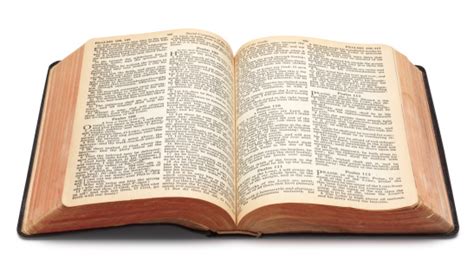EarlyActs
Senior Member
- Joined
- Jun 24, 2023
- Messages
- 4,162
- Reaction score
- 517
- Points
- 113
THE TWO SAME SONGS
a loved story
Marcus Sanford, Interplans.net Studio
June 2024
After hearing and exchanging a little about the similarity of their life difficulties, he wanted to leave her with something inspiring. It came down to two songs and while they were so different as to come from three different continents, he wanted her to see the unity of the two.
It would seem to make more sense to say that they came from two different continents, but three is accurate. One song was from the US, while the other was a German band that foraged in the Americas for new material, so it was three.
The last talk had made it clear that theirs was going to be a loved story, past tense. Besides age differences and misunderstandings about how a new generation picks attire, etc., there was the more substantial knot of a complicated settlement. But actually it was about the remarriage rules of Jesus that had truly stood the test of time, but were perhaps difficult to express to the modern public.
That was that it was a victim of marital cheating that was allowed to remarry; that the initiator of such cheating was condemned and disallowed. When all the sayings of Jesus on the matter were brought together, this was clear; it was the bringing together which did not go so easily.
And so the question of something inspiring, something for the believer who He said should not remarry and had accepted that. OK, he thought, she can’t remarry, but must she live uninspired? He did not think so. She had, after all, repented and was keeping the rule.
One song was a boppy contemporary praise piece. The other was high art, borrowing on Peruvian wind instruments and deep drums, and yet just enough classical element to make a Western person find grounding. A classical clarinet helped on that. The boppy was actually two very distinct movements, alternating on verse and chorus, while the high art was all instrumental.
He had had two songs push into his mind while hiking before, but not these two. That is, two at a time. He actually thought something was wrong with him—but right with the things he heard—but it was only in his head. The wrong things were only in his head. When he got home, he worked out the two on his guitar, and they matched perfectly. It was “I Still Haven’t Found…” by U2 and “Open The Eyes of My Heart” at the same time, same key, same timing, sung in an antiphonic, although no one had written it that way. Maybe some day, a composer would make a medley of them.
It was a little bit like the day he went to a theater, left to go camping and had the theme song of another movie on the next morning, and within a few minutes a merge of one scene bridged the two stories seamlessly, so that he sat for 20 minutes writing that out. His campfire died. The coffee water never boiled.
The boppy verses dragged through the dregs of life’s difficulties with a note that was nearly monotonous and almost too low for the male voice. The drum was tuned to be slightly sour. Yet it “worked.” And then the chorus switched over to an exhuberant sky-high celebration of God sustaining a person through the very same times. All the lyrics were direct and true.
And you have to have clarity of both for a true piece. Can’t avoid the grinding situations, nor the uplift of grace and peace. The composer said it was actually an old song, redone. Which was exactly the point. There has always been this situation and if the believer did not avoid one or the other feature, it would ring powerfully true, like the English immigrant family that sailed all the way to America only to shipwreck, with only him surviving and writing “It Is Well With My Soul.” It is not an easy song to swallow, but it is ‘true.’
The other song came from a different kind of observation about turmoil and turbulence in life, and he thought it might be due to the foundational deep drum. Then he was hiking again, which was itself an important therapy, and he realized what the drum had tapped into. It was the steady footsteps of the hiker making progress. He might have been in a tight spot, a steep climb, an encounter with a mother goat, but the steadiness of the drum made him realize those were just spots along the way to the tops. But there was something else.
The down-tempo of the drum made his mind see that he was looking at those past setbacks in slow motion. And once again the reality of the song, the ‘truth’ of it that makes you listen an inexplicable number of times, came through. It was precisely because it was in slowmo that the song was real. There was time all along the way to revisit the things that had happened, but now the word ‘had’ was the largest in the world. They were not what was happening, but they were past.
Then, as I mentioned, he came to the ‘high meadow’ of the song, and it was a total surprise each time, it seemed to him. He had been surrounded by some kind of annoying machine-like sound, like a person grunting along in an all day task, and the deep drums, and the Peruvian pipes hoping for something delightful to come along, against all hope, and then…there it was. A break from almost all that to the domain of a classical clarinet.
It actually replaced something in a very old memory, that of listening to Peter And The Wolf as a recording of several classical instruments symbolizing the sounds of various forest creatures. The thing was, he just could not recall what the clarinet stood for. He was afraid of committing some blasphemy about this, yet the hiking theme took over in his memory, that is, the theme of arriving at a glorious meadow full of sun, surrounded by impossible towers, the backpack off, making you feel like you were perhaps one foot off the ground, which was good because there were many wildflowers in bloom and you didn’t want to step on even one.
The clarinet took away more than the steadiness of the drum. And he noticed that strings were braided around the Peruvian pipes that soared on the chorus of this song, but they could not compare with the clarinet. It was in Morricone’s THE MISSION and Capponi’s sound track of JANE EYRE. That place, that arrival where all was well enough, as much as it could be in this life, that it wasn’t all the work of the trail. It even made the violin-braiding of the choruses more tasteful than the work of the song’s verses.
He sent her the time mark of the clarinet ‘plateau’ but it was just for her benefit. They weren’t going to be able to talk about it, she had determined. It was his hand-made card: ‘I hope you will be very happy, signed…’
There is nothing that can be done about some consequences of sin, but there are the clarinet moments of life when it seems like something from outside this life has infiltrated. It comes in a way that is OK to taste, to touch, without any of the heavy weights of the other tastes and touches.
All the right words were there in the boppy song, but the Peruvian pipe song took a person to a place which the A-B structure of the bop did not.
She knew, she got that ‘card.’ She would catch a glimpse of him around town, only to spend less than a second affirming, by a brief glance, that she had been to the clarinet meadow. And in this life, that was all he wanted to know back from her.

